Do SSDs Need Heatsinks? The Truth About SSD Heating
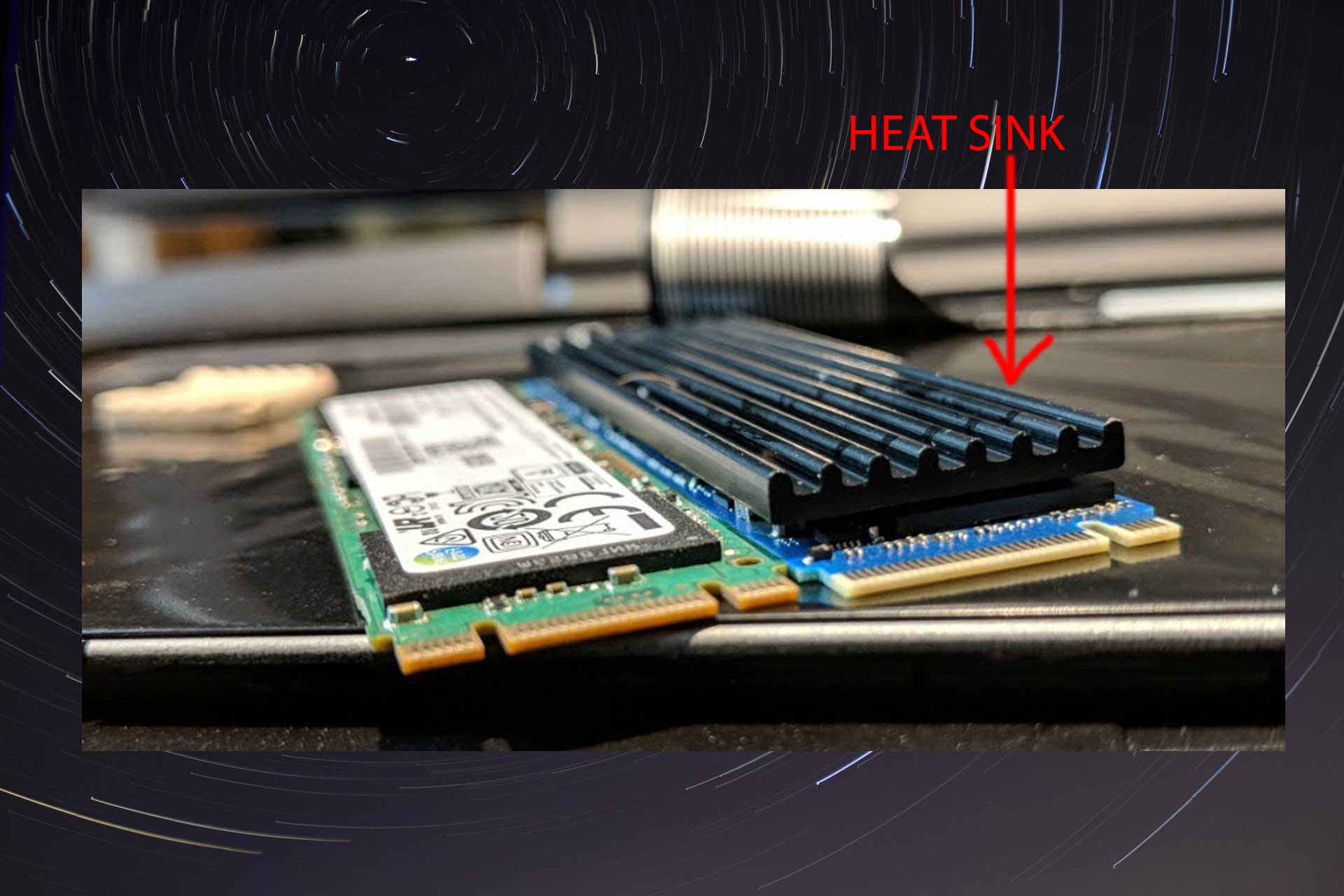
Do SSDs need heatsinks? This is a question that has been asked a lot lately as more and more people are making the switch from traditional hard drives to solid-state drives. There is a lot of misinformation out there, so in this blog post, I will set the record straight and give you the truth about SSD heating.
To answer the question No SSD do not need heatsinks. They don’t produce nearly as much heat as normal hard drives, and they also have a very low failure rate. However, if you are using high-end SSDs like PCI Gen 4, you may want to consider using a heatsink but even if you don’t, your SSD will still work just fine.
Click here to jump to Recommended Heat Sinks section
For those who don’t know about basics here is a quick catchup
What Is an SSD
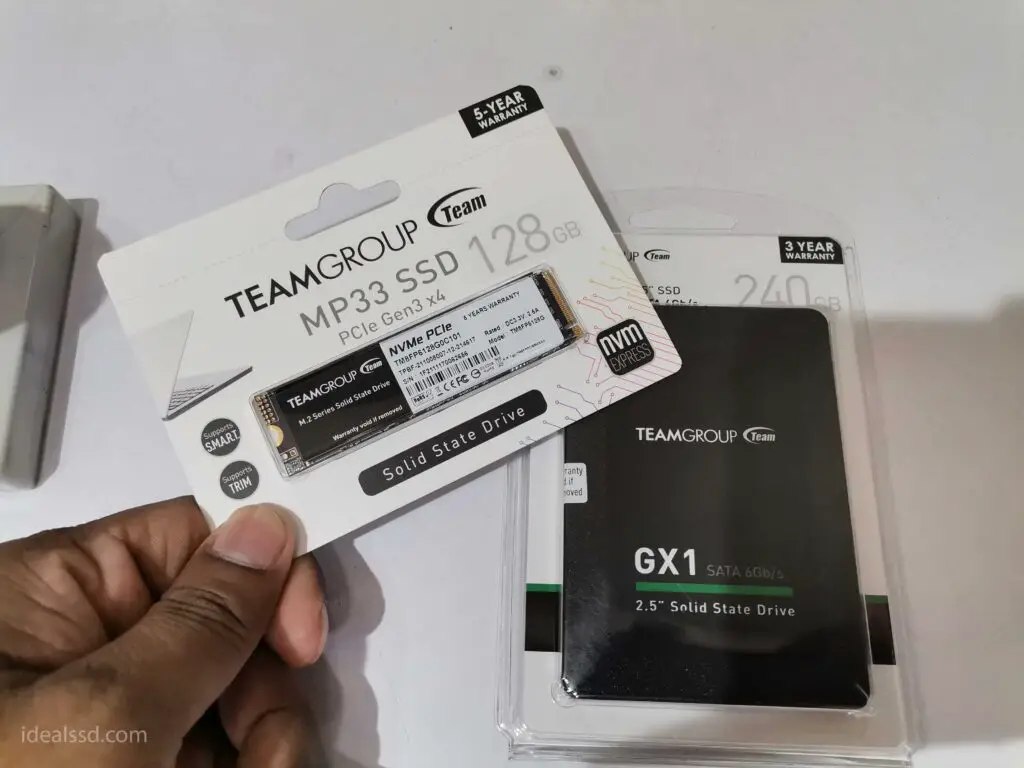
An SSD is a type of computer storage that uses chips instead of spinning disks to store data. SSDs are typically much faster than traditional hard drives, and they use less power, which can extend the battery life of laptops. SSDs are also more durable than hard drives, as they are not susceptible to the same kind of physical damage.
However, SSDs are more expensive than hard drives and typically have smaller capacities. As a result, many users choose to use a combination of an SSD for their operating system and applications, and a hard drive for bulk storage.
There is another option that is SSHD. SSHD stands for Solid State Hybrid Drive. An SSHD is a storage device that combines a traditional hard disk drive (HDD) with a solid-state drive (SSD). The SSD portion of the device is used to store frequently accessed files, while the HDD portion is used for infrequently accessed files.
This combination of technologies provides the benefits of both SSDs and HDDs, namely high speed and large capacity. SSHDs are typically faster than HDDs, and they offer greater capacities than SSDs. To know more about this drive refer to this. What is SSHD and Which Is Better: SSD or SSHD?
There are two main types of SSDs: SATA and PCIe. SATA SSDs use the same type of connector as traditional hard drives, while PCIe SSDs use a different type of connector that is only found on motherboards that support it. NVME is a new standard for PCIe SSDs that offers even better performance. To know more about NVME SSDs refer to this. What Is NVME SSD? The Future of Solid State Drives
Does Temperature Affect SSD?
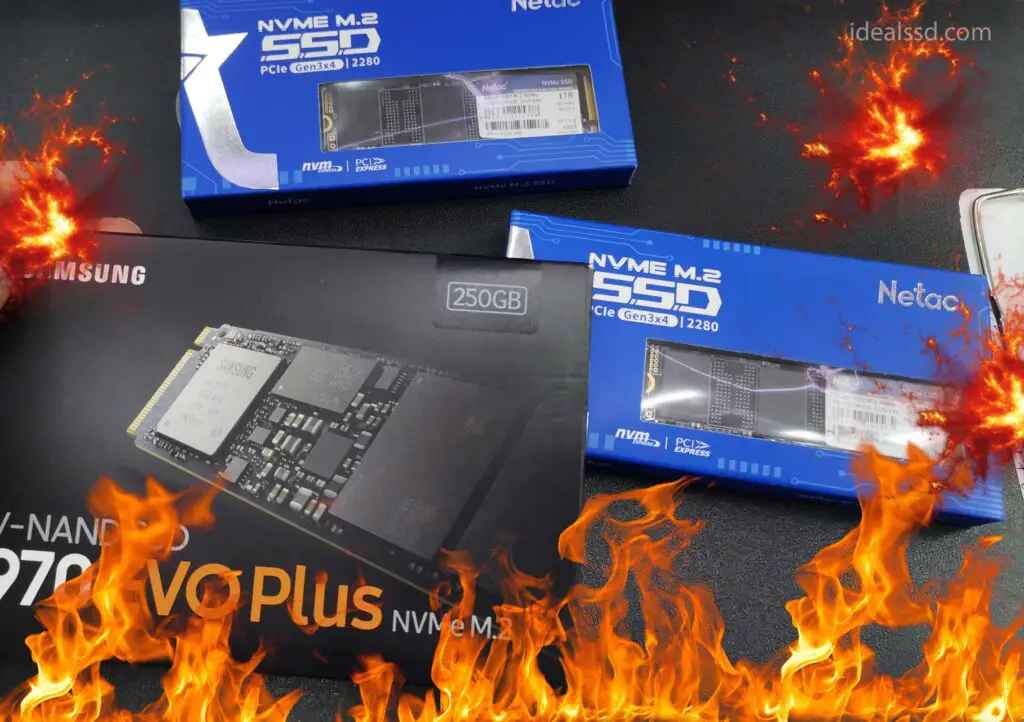
When it comes to electronic devices, most people know that it is important to keep them cool. This is because extreme heat can cause components to expand, leading to damage. However, many people are not aware that temperature can also have an impact on solid-state drives (SSDs).
SSDs are made of flash memory, which is sensitive to temperature changes. If an SSD gets too hot, it can start to degrade, leading to data loss. Conversely, if an SSD gets too cold, it can also suffer from data loss. As a result, it is important to keep SSDs within a certain temperature range to ensure optimal performance. The ideal temperature range for SSDs is between 0°C to 70°C (32°F to 158°F). To know more about this refer to Safe Operating Temperature For SSD
Can SSDs Overheat?
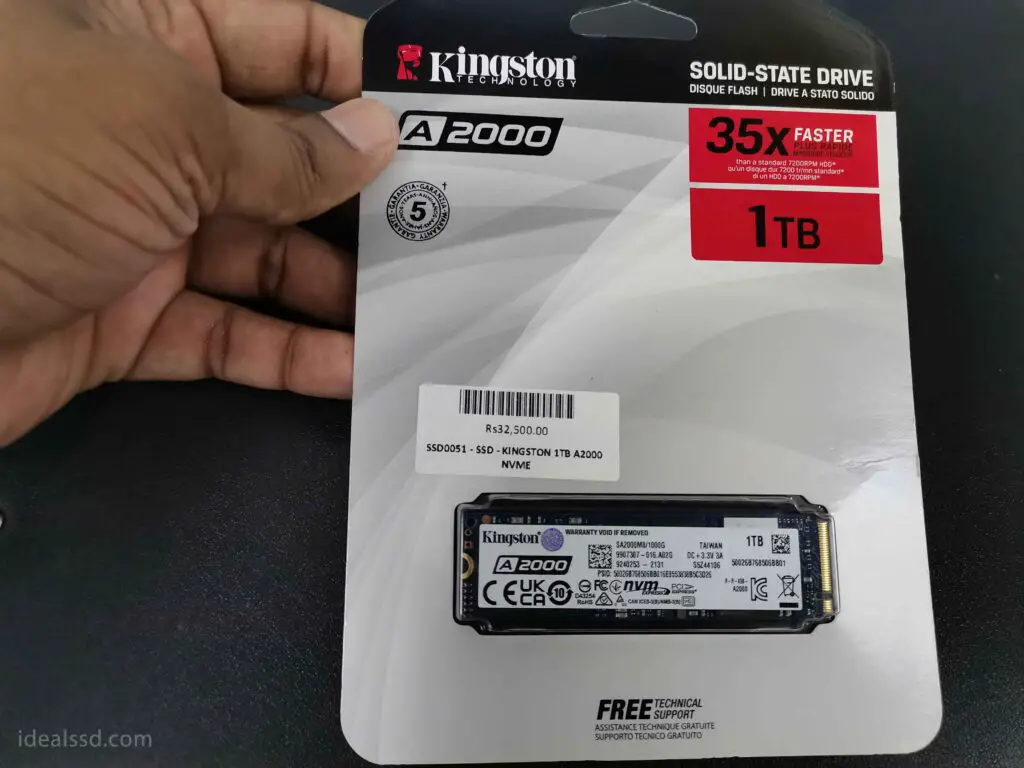
Unlike traditional hard drives, SSDs don’t have any moving parts. This means that they generate less heat and are less likely to overheat. However, SSDs can still get hot, especially when they’re working hard. If an SSD starts to overheat, it can start to slow down or even fail. That’s why it’s important to keep an eye on the temperature of your SSD and make sure that it doesn’t get too hot or cold.
The ideal temperature of an SSD is between 0 and 70 degrees Celsius. This range is optimal for the performance and longevity of the drive. Above 70 degrees, the drive will start to throttle its performance in order to prevent overheating. Once the temperature hits 85 degrees, the drive will enter a critical state and will shut down in order to prevent damage.
While most drives are designed to operate within this temperature range, some drives may be rated for higher or lower temperatures. For example, enterprise-grade drives are often rated for operation at temperatures up to 85 degrees. However, it is important to note that these ratings are for short-term operation and do not reflect the long-term effects of sustained exposure to high temperatures. As such, it is still best to keep your SSD within the recommended temperature range.
What Can You Do To Keep Your SSD Cool?
There are a few things you can do to help keep your SSD cool, such as
1 ) Make sure that there’s plenty of airflow around it, and not blocking the ventilation holes.
As any computer user knows, heat is the enemy of electronic components. When components overheat, they can become damaged or even destroyed. This is especially true for solid-state drives, which are sensitive to heat and can be easily damaged by excessive temperatures.
Make sure that there’s plenty of airflow around it. If the drive is enclosed in a case, make sure that the case has good ventilation. Second, don’t block the ventilation holes. If the drive gets too hot, it will shut down to prevent damage.
2) Avoid putting your PC in a hot environment or colder environment.
The average temperature for an SSD is between 0 and 70 degrees Celcius, so it’s important to keep your drive within this range. If the environment is too hot, it can cause the cells to overheat and potentially become damaged. Conversely, if the environment is too cold, the SSD will use more power to heat itself up to operating temperature, which can shorten its lifespan.
In addition, sudden changes in temperature can also cause condensation to form on the drive, which can lead to data loss. For these reasons, it’s best to avoid both extreme heat and extreme cold when storing or using an SSD. You have to keep it in the sweet spot in between.
3) Consider using a Heatsink to help keep the drive cool.
One way to help keep your SSD drive cool is by using a Heatsink. Keeping the drive cooler, will not only improve performance but also help to prolong its lifespan. There are a few things to consider when choosing a cooling method. First, make sure that the pad or fan is big enough to cover the entire SSD.
Second, choose a model that will run quietly so as not to interfere with your work or leisure activities. Finally, consider how easy it will be to set up and use the Heatsink. With a little research, you should be able to find a model that meets your needs and helps to keep your SSD drive cool.
What Is an SSD Heatsink?
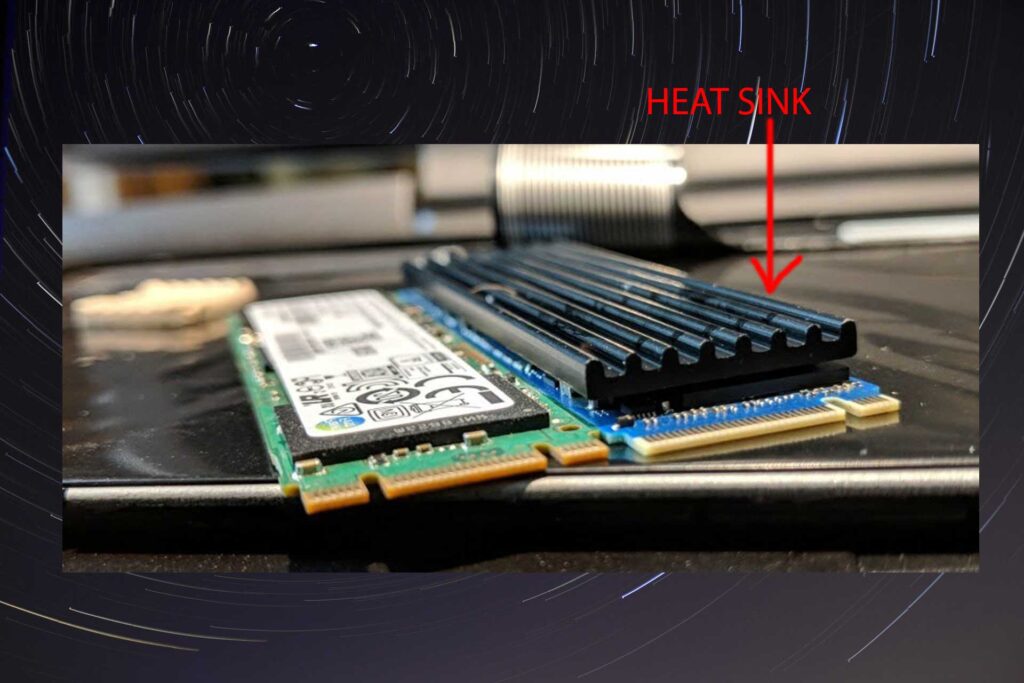
An SSD heatsink is a specialized type of cooling device that helps to dissipate the heat generated by a solid-state drive (SSD). Unlike a traditional hard drive, an SSD contains no spinning disks or movable parts. This means that it generates less heat than a traditional hard drive, but the heat it does generate can be detrimental to the drive’s longevity.
An SSD heatsink helps to spread the heat evenly across the surface of the drive, allowing it to dissipate more quickly and keeping the drive cooler. In addition, an SSD heatsink can also help to protect the sensitive components inside the drive from damage due to overheating. As a result, an SSD heatsink is an essential piece of equipment for any user who wants to get the most out of their SSD.
SSD heatsinks come in a variety of shapes and sizes, so it’s important to choose one that fits your SSD snugly. Heatsinks are also available with different cooling solutions, such as active or passive cooling. Active cooling SSD heatsinks typically include a fan, while passive SSD heatsinks rely on convection to cool the drive. Whichever type of SSD heatsink you choose, it’s important to make sure that it’s compatible with your SSD.
Heatsinks are also available at a variety of prices, so it’s important to find one that fits your budget. However, be sure to avoid heatsinks that are too cheap, as they may not be made from quality materials and may not offer the same level of protection as more expensive models.
Does SATA SSD Need Heatsinks?
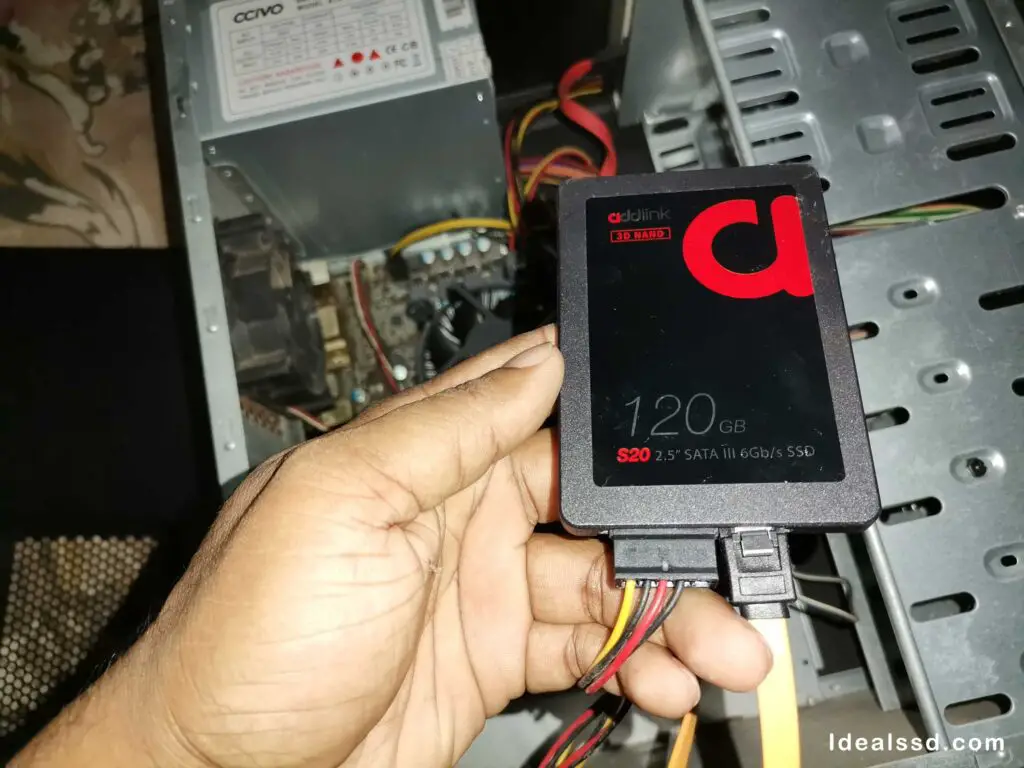
No. SATA SSD in particular doesn’t need heatsinks because they already have a built-in heat sink in the form of their metal casing. Just make sure that the casing remains free of obstruction and dust so that air can circulate around it.
Do NVMe SSDs Need Heatsinks?
The short answer is that NVMe SSDs generally don’t need heatsinks, because they don’t produce as much heat as other types of SSDs. However, there are some cases where a heatsink may be beneficial. For example, if you are using an NVMe SSD in a particularly hot environment, or if you are overclocking your SSD, then a heatsink can help to keep the drive cool and prevent thermal throttling.
If you have the latest motherboard that supports NVMe, then probably it comes with a built-in heatsink for the M.2. You can use this heatsink to cool your NVMe SSD.
If you don’t have a heatsink that comes with your motherboard you can always purchase them aftermarket.
Do Motherboards Come With M.2 Heatsinks?
A motherboard is the central printed circuit board (PCB) in a computer. It holds many of the crucial components of the system, including the central processing unit (CPU) and memory modules.
One of the latest trends in the inclusion of M.2 slots, which are used for SSDs (solid-state drives). Many motherboards now come with M.2 heatsinks, which help to dissipate heat and keep the SSDs running cooler. As a result, motherboards with M.2 heatsinks are becoming more popular with consumers who are looking to get the most out of their computer systems.
Do Gen 4 SSDs Need a Heatsink?
Gen 4 SSDs are the latest generation of solid-state drives (SSDs). They offer significantly faster data transfer speeds than previous generations, making them ideal for power users who require the utmost in performance. Gen 4 SSDs utilize the PCI Express 4.0 interface, which allows for data transfer speeds of up to 16 Gbps.
In addition, they feature enhanced error correction and improved power management. As a result, Gen 4 SSDs offer the highest level of performance and reliability currently available. If you’re looking for the best possible SSD experience, Gen 4 is the way to go.
Since the release of the Gen 4 SSDs, there has been a lot of debate about whether or not they need a heatsink. SSDs generate heat when they are in use, and this can lead to performance issues. A heatsink helps to dissipate this heat, preventing the SSD from overheating. Gen 4 SSDs are more powerful than previous generations, and they also tend to run hotter.
As a result, many experts believe that a heatsink is essential for optimal performance. However, it’s important to note that not all Gen 4 SSDs will require a heatsink. If you’re using your SSD for basic tasks like web browsing or word processing, you may not need one. But if you’re using your SSD for more intensive tasks, like gaming or video editing, then a heatsink is definitely recommended.
Recommended Heat Sinks (Editor’s Picks)
MHQJRH M.2 2280 SSD heatsink
Don’t let your M.2 SSD overheat and ruin your gaming performance! This M.2 2280 SSD heatsink is designed to keep your SSD cool and prevent overheating. Made from aluminium alloy, it features a groove design that increases the heat dissipation area for a cooling effect of 10°C – 30°C. With a double-sided clip design and 6 adjustable height screws, it’s suitable for M.2 SSDs of various heights.
Plus, the Advancing Gene thermal pad is made from Nano Silicon Grease material for excellent thermal conductivity. Keep your SSD performing at its best with this M.2 2280 SSD heatsink.
SABRENT M.2 NVMe Heatsink for The PS5
Looking to get the most out of your PS5? Make sure your console’s SSD is running at peak performance with the Sabrent M.2 NVMe Heatsink.
This easy-to-install heatsink is precision-engineered to fit perfectly into the PS5 console’s SSD expansion slot. Made from high-quality CNC’d aluminium, it features Sabrent’s “Sandwich Design” for efficient and consistent heat transfer. This ensures that your SSD stays cool and performs at its best, giving you the edge in all your gaming sessions.
References
- Does Your M.2 NVMe SSD Need a Heatsink? : https://www.maketecheasier.com/does-nvme-ssd-need-heatsink/


